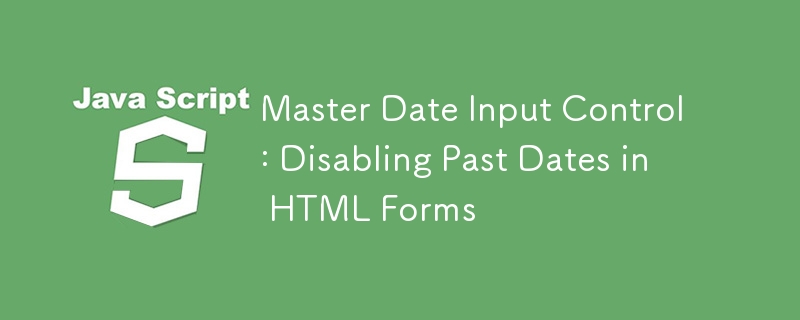

When working with forms that require users to select a date, you often need to prevent them from choosing past dates—especially for scenarios like booking appointments or making reservations. This is a common requirement in many applications, and luckily, HTML and JavaScript provide a simple way to handle this.
Theelement with type="date" allows users to pick a date easily. However, by default, the user can select any date, including past ones. To restrict users from selecting a date before the current day, you can use the min attribute in conjunction with JavaScript.
Here’s an example of a simple date input:
To prevent users from selecting a past date, you need to set the min attribute of thefield. The min attribute specifies the minimum date that can be selected.
You can dynamically set the current date using JavaScript’s Date object, format it to the required YYYY-MM-DD format, and apply it to the min attribute.
For React users, here’s how you can integrate this into a TextField component:
import { TextField } from "@mui/material"; import { Field } from "formik"; const ReservationDateField = ({ touched, errors }) => { return (
Restricting past dates is essential in forms that manage future events like:
It improves user experience by preventing invalid date selections and reduces the likelihood of user error.
Disabling past dates is a simple yet powerful way to improve your forms. Whether you’re a beginner or an experienced developer, applying this technique ensures your users don’t accidentally select incorrect dates. This small step can make a big difference in your application's usability.
The above is the detailed content of Master Date Input Control: Disabling Past Dates in HTML Forms. For more information, please follow other related articles on the PHP Chinese website!
 How to calculate the refund handling fee for Railway 12306
How to calculate the refund handling fee for Railway 12306 Advantages of pycharm
Advantages of pycharm How do PR subtitles appear word for word?
How do PR subtitles appear word for word? What file is windows.old?
What file is windows.old? What is the difference between php5 and php7
What is the difference between php5 and php7 What are the Python artificial intelligence frameworks?
What are the Python artificial intelligence frameworks? The difference between paste mask and solder mask
The difference between paste mask and solder mask Three commonly used encoding methods
Three commonly used encoding methods



